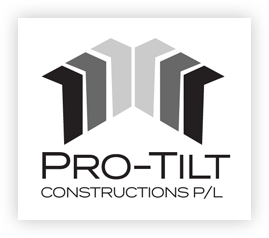A Guide to Designing Your Company’s Warehouse: Tips from Trusted Commercial Builders
23 March 2020Warehouses are facilities that provide a proper environment for the purpose of storing goods and materials that require protection from the elements. Warehouses must be designed to accommodate the loads of the materials to be stored, the associated handling equipment, the receiving and shipping operations and associated trucking, and the needs of the operating personnel. The design of the warehouse space should be planned to best accommodate business service requirements and the products to be stored/handled. The economics of modern commercial warehouses dictate that goods are processed in minimal turnaround time. Below is a guide to designing your company’s warehouse from tips from trusted commercial builders.
Warehouse Should Be Designed Based on Current and Future Needs
You can choose the type of space depending on the program of the warehouse being designed, space types may vary dramatically from storage space, office space, loading docks for shipping and receiving, light industrial spaces, and computer centres. Warehouses should be designed based on current and future needs.
Warehouse Should Be Adaptable
Your warehouse should facilitate changes in business or agency growth, and size or population of office and warehouse spaces within the building. Warehouse space should be easily adapted to new functions such as offices both on ground or upper levels, computer centers, or light industrial fabrications. They should be able to accommodate the need for future loading docks, truck space, and car parking spaces if space configuration changes through effective site design.
Warehouse Should In-Sync with Technology
Warehouses should be able to address material handling technologies and business practice, such as “just-in-time” storage, which have fundamentally changed the operation of warehouses and distribution centers and will continue to do so.
Warehouses Should Include Appropriate Design Components
Warehouses should include roof design with built-in extra structural capacity to handle addition of future rooftop equipment. They should be designed with fire protection capacity to accommodate storage of materials with a greater fire hazard, especially needed with high plastic product content or packaging, and plastic shrink-wrapped pallets.
Warehouses Should Maximise Space
As a warehouse owner, you should maximise utilisation of space while providing adequate circulation paths for personnel and material handling equipment such as forklift trucks. You should use higher bays to take advantage of height allowances in the space. You should also optimise layout and configuration for the warehouse operation, including efficient circulation and material handling and storage processes. It is also important to relate interior and exterior receiving and shipping operations to the process flow of goods through the warehouse.
Receiving and shipping are best separated to avoid congestion at the loading dock areas in the building, and in the truck maneuvering areas. Alternative material handling methods will determine other building aspects, such as aisle widths, lighting design, need for mezzanine space, fire protection, and egress design. Businesses will often use different methods of storage handling simultaneously for different products.
You could also draw straw storage alternatives like floor storage with counterbalanced lift truck, floor storage with reach lift truck, single deep rack with reach lift truck, drive-in rack with reach lift truck, drive-in rack with counterbalanced lift, double deep rack with deep reach lift truck, single deep rack with swing reach lift truck, single deep rack with turret side loader lift, and single deep rack with swing mast lift truck. Other picking alternatives can be useful too. These include case flow rack with center conveyor, bin shelving with picking cart, single deep rack with pallet truck or with stock picker, pallet flow rack with pallet truck, horizontal carousel with shelf and conveyor, or vertical carousel.
Consult Pro-Tilt Construction Pty. Ltd. for your commercial contractor needs. We are a commercial and industrial builder and contractor based in Broadmeadows, Victoria. Our company specialises in commercial and industrial building and construction.
Optimized by: Netwizard SEO

